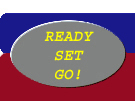|
The
American Heart Association, in a recent news release, cited
research showing high-intensity exercise can significantly
lower the risk of heart disease.
Simply,
as exercise intensity goes up, the risk of heart disease
goes down.
New
research
The
researchers compared the impact of different levels of exercise
intensity. The study subjects (men average age 66) in the
high-intensity exercise group produced a 31% risk
reduction for heart disease. And this was 14% better than
those who performed "less intense" exercise.
"The
harder one exercises ... the lower the risk of heart disease,"
said lead researcher Dr. I-Min Lee, associate professor
Harvard Medical School.
Relative
Intensity
This
study also proves another important point concerning fitness
training during aging. Exercise intensity is relative to
one's fitness level.
In
other words, an older individual can reach high-intensity
exercise with effort that might be considered low-intensity
for someone young
and fit.
What
does this mean to you?
Personal
trainer, triathlete, or just starting a fitness program,
the goal of the Ready, Set, Go program is to help you discover
the benefits of releasing your "fitness hormone"
through high-intensity exercise.
This
new study confirms the need for higher intensities, but
it also shows that beginners and older adults can reach
the more productive levels of exercise intensity with less
effort than a triathlete, for example.
The
Sprint 8 Workout described in Chapter 8, Accelerating
HGH Release with Anaerobics may be performed by power
walking or by actual sprinting - running, swimming, cycling,
skiing - depending on your age, current fitness level, and
training experience.
Newcomers
to high-intensity exercise may get great results initially
by performing the Sprint 8 Workout with power walking.
A
fine tuned triathlete however, may need to add an additional
4 X 150 meter sprints (on run days) and 4 X 50 meter
swim sprints (on pool days) to their Sprint
8 Workout to reach the desired high-intensity level.
The
proper perspective of fitness training during aging
When
you see an eighty year old participant running a 10-K or
working out in the gym, don't think that it's unfortunate
that she can't run as fast, or lift as much as her younger
counterparts.
It's
the intensity of exercise that produces results. And exercise
intensity is relative to current fitness status.
A
goal worth considering
Ever
thought about hiking the Appalachian Trail, running a marathon,
or climbing Everest? But you know you don't have the time.
Here's
a very realistic goal worth considering.
If
you're over 50 and not participating in masters and
senior games events, check out these programs; www.seniorolympics.com,
State
Games listings & www.masterstrack.com
If
you're over 30, training for a master's competition
can be very motivating. And it's certainly a middle-age
somatopause buster!
Ages
brackets; age 30-34, 35-39, 40-44, continue on up in five
year increments. Some Masters Web sites are listed below
in the MORE INFO section.
The
Take Home
*
If you're not exercising regularly now, this research shows
that you don't have to workout for hours to get results.
Get physician clearance, and get started.
*
If you're a pro and want to help others improve fitness,
it's important to remember that newcomers may get great
results initially from what you might consider a warm-up.
* If you're an X-jock, maybe you can't run a 4.4 any more,
but I think you'll be amazed at how the body responds to
a slow, progressive, wise, buildup program to high-intensity
fitness training.
Phil
Campbell, M.S., M.A., FACHE
Author Ready, Set, GO!
Synergy Fitness for Time-Crunched Adults
The
2nd edition of Ready, Set, Go! Synergy Fitness with
five levels of fitness plans based on age, condition, and
training experience is available on-line - click
here.
|


